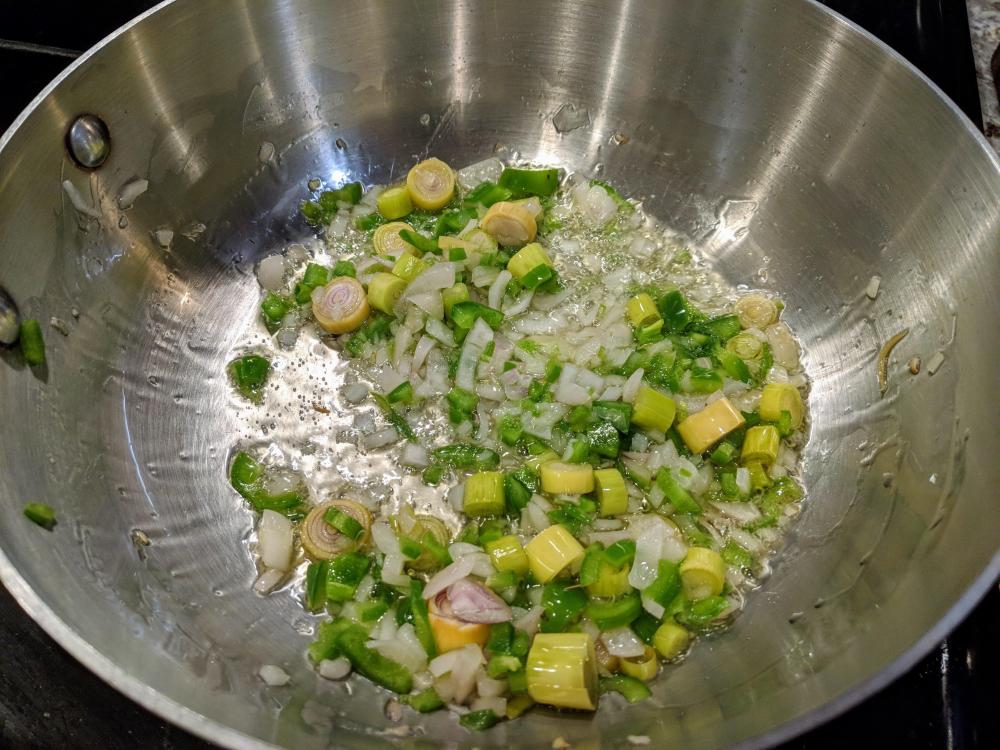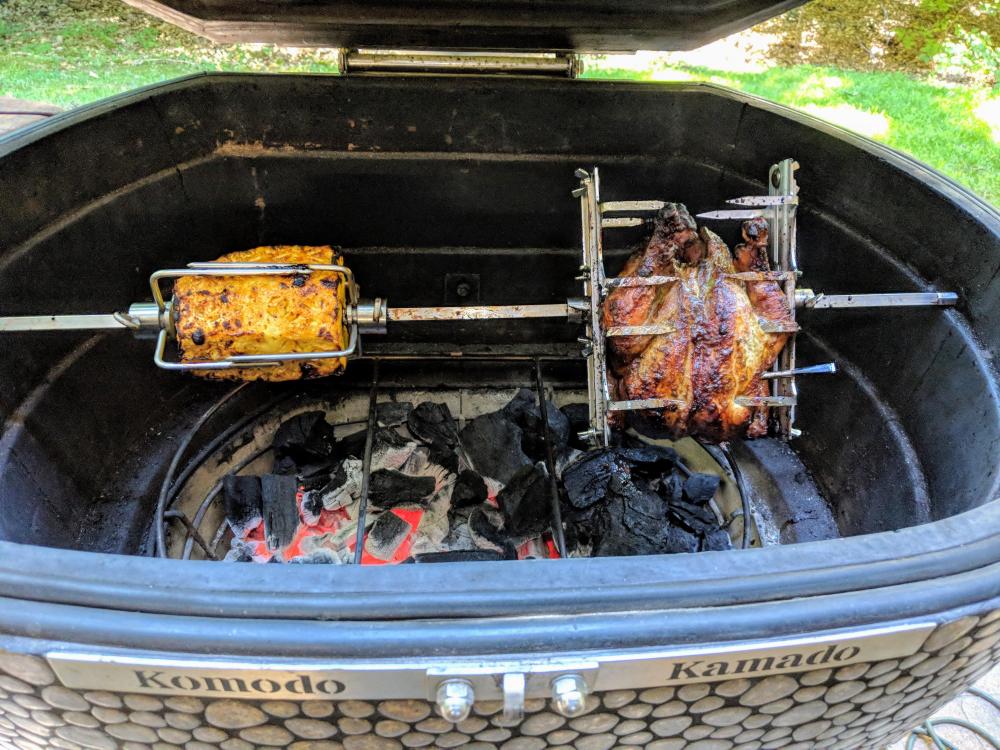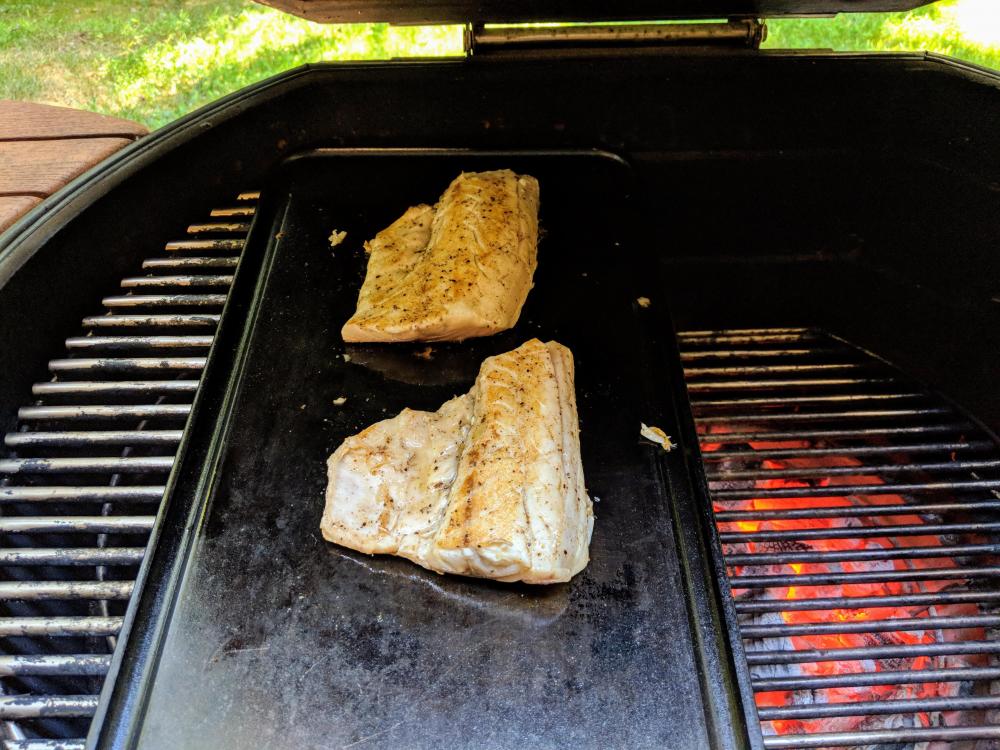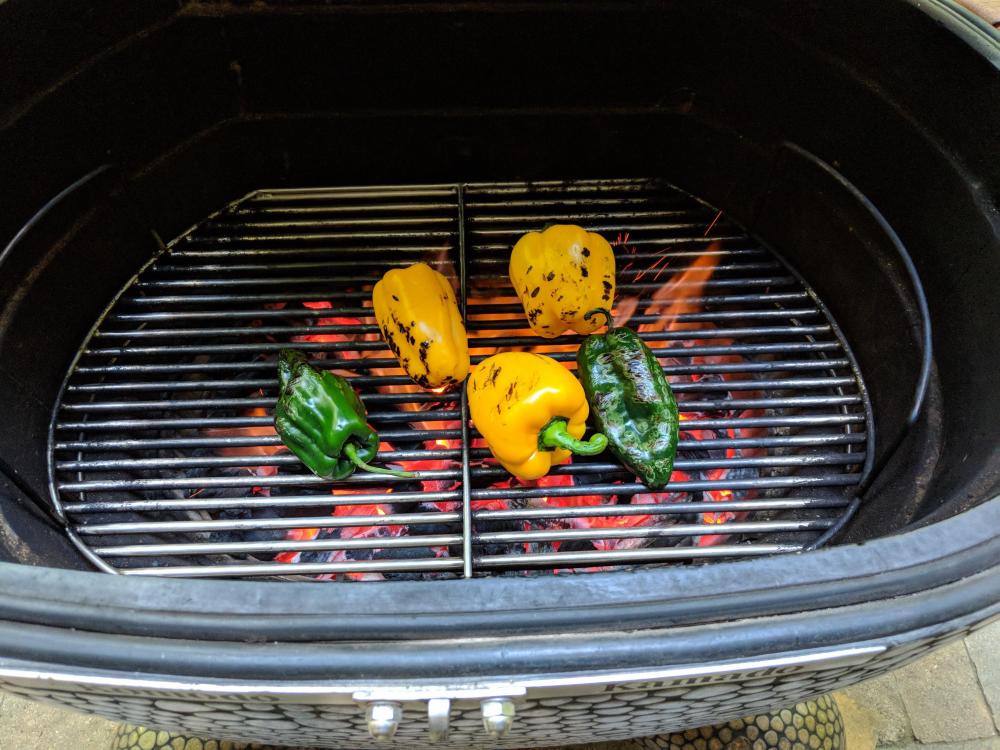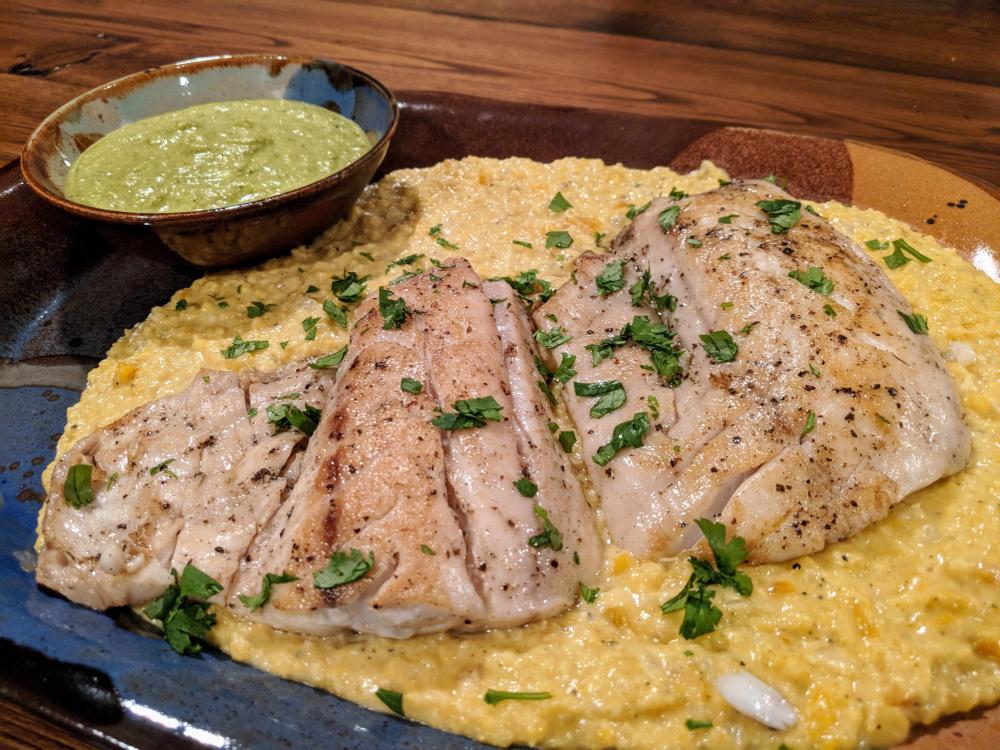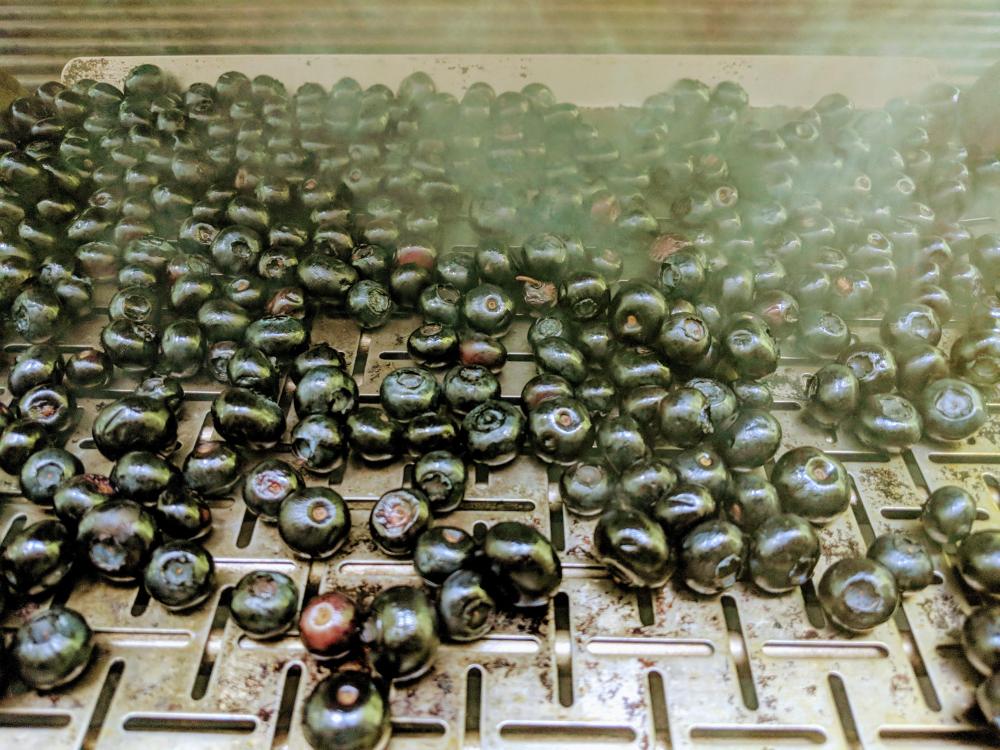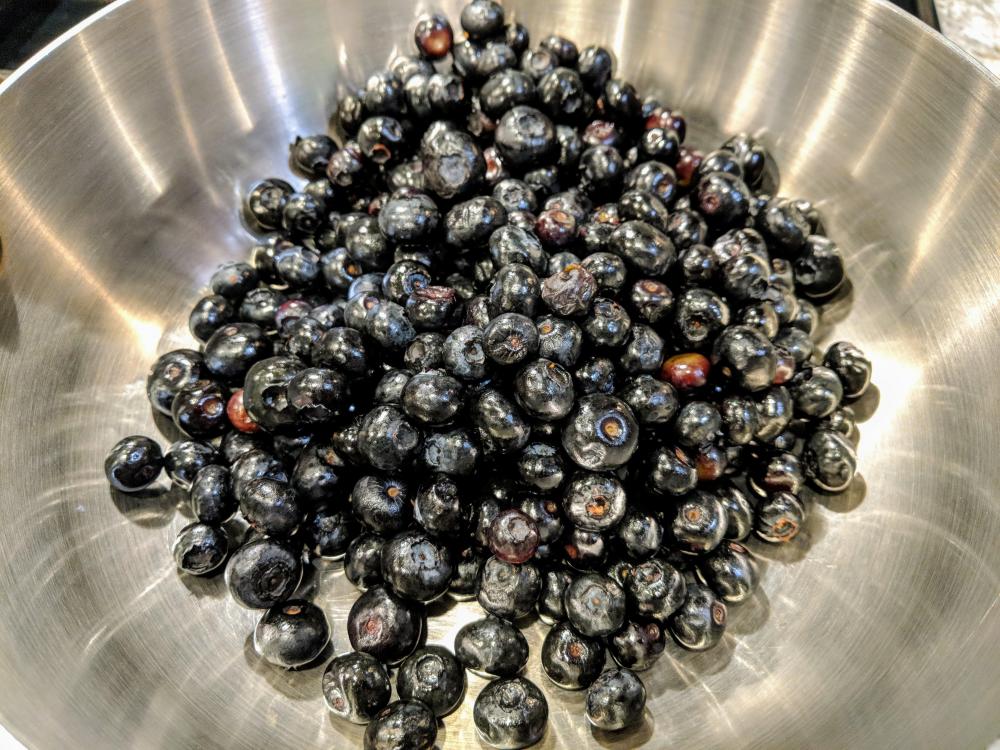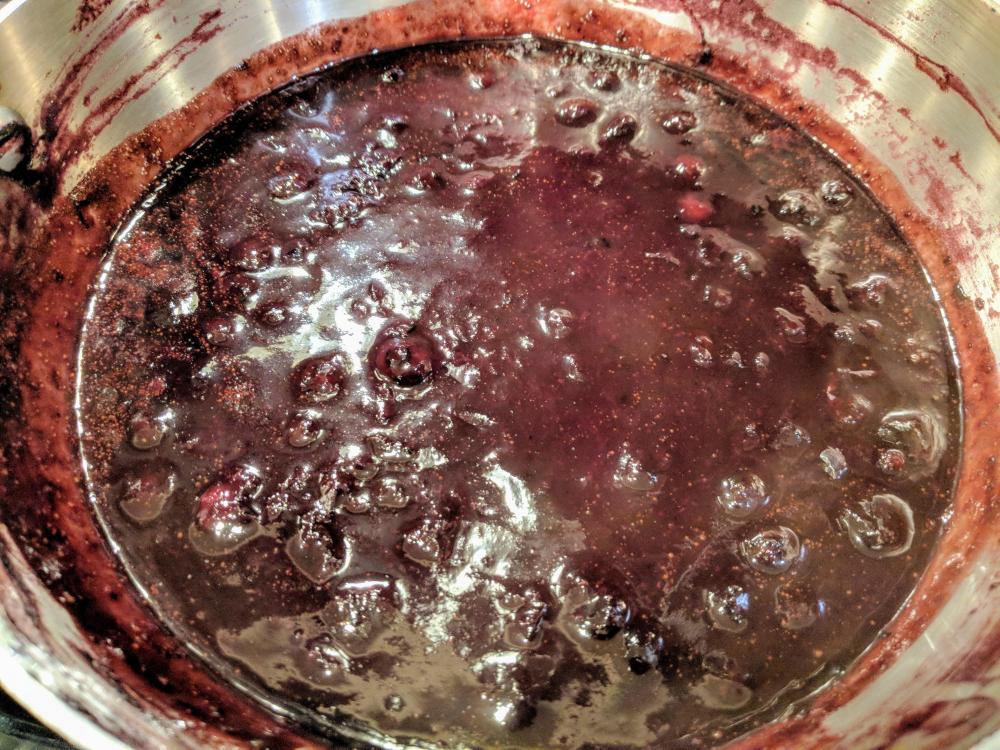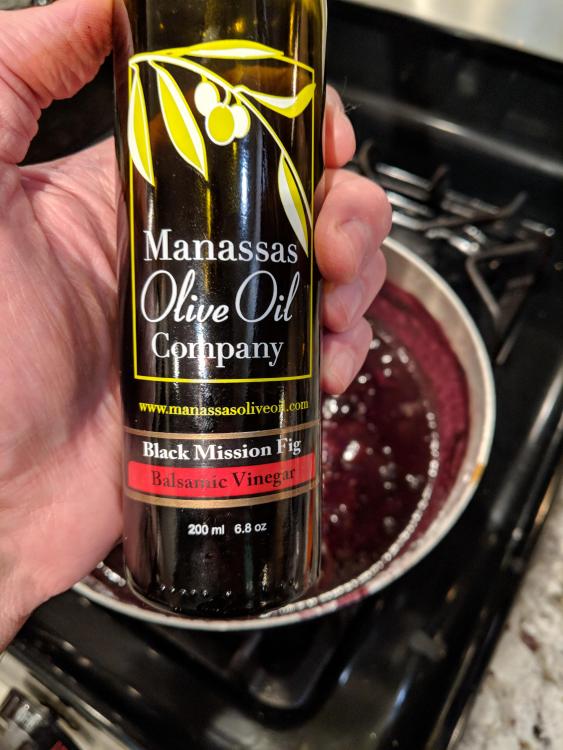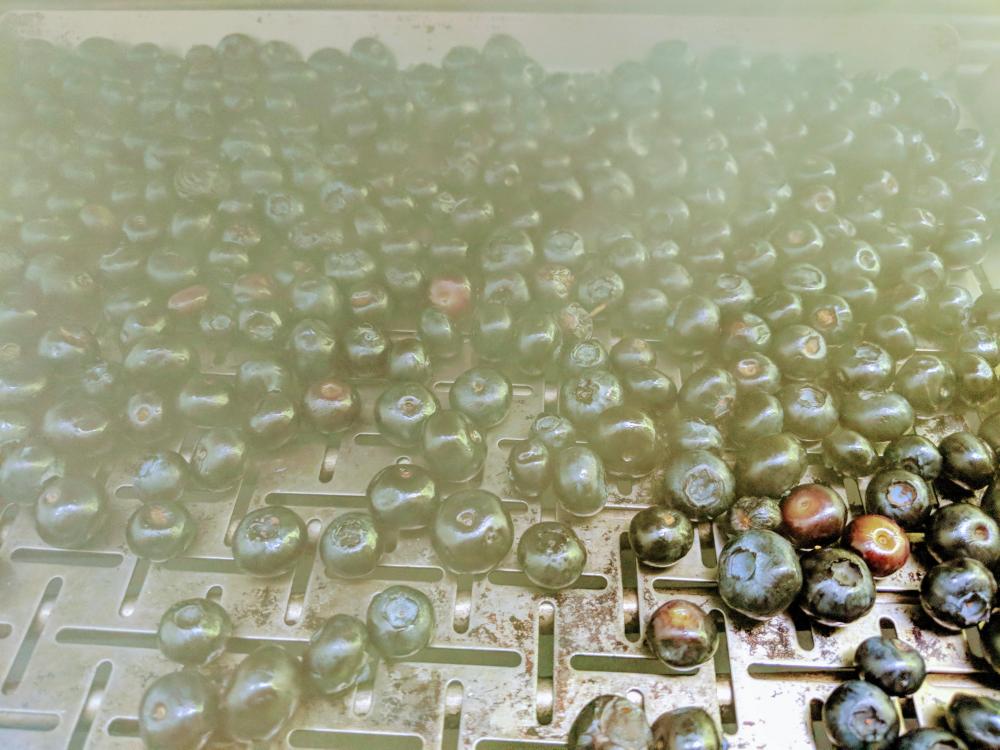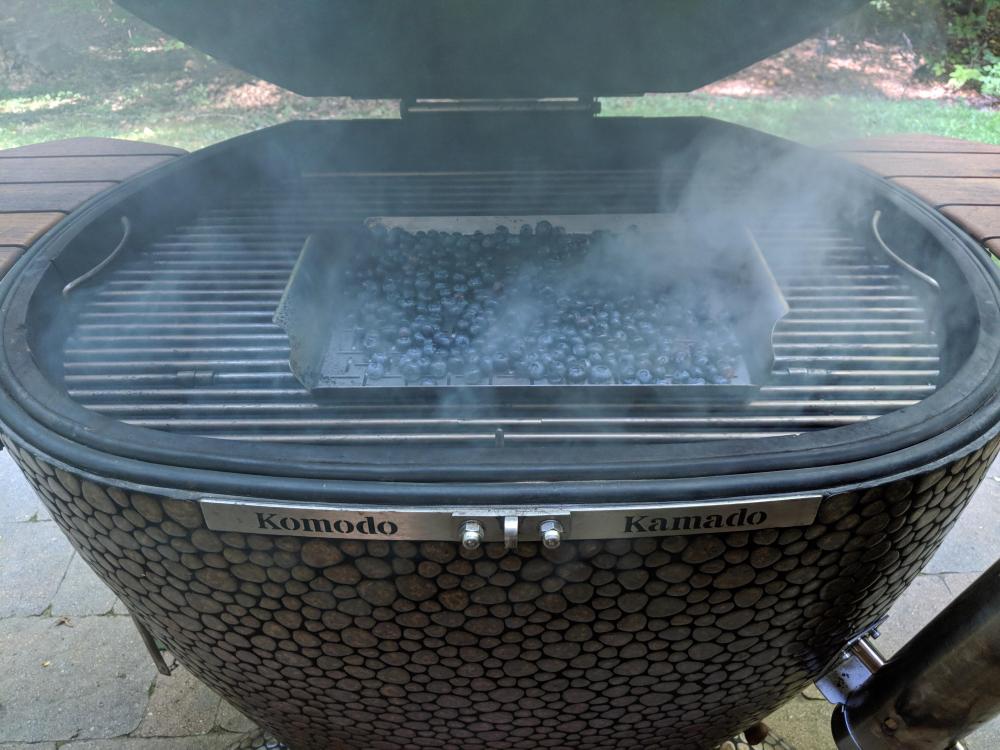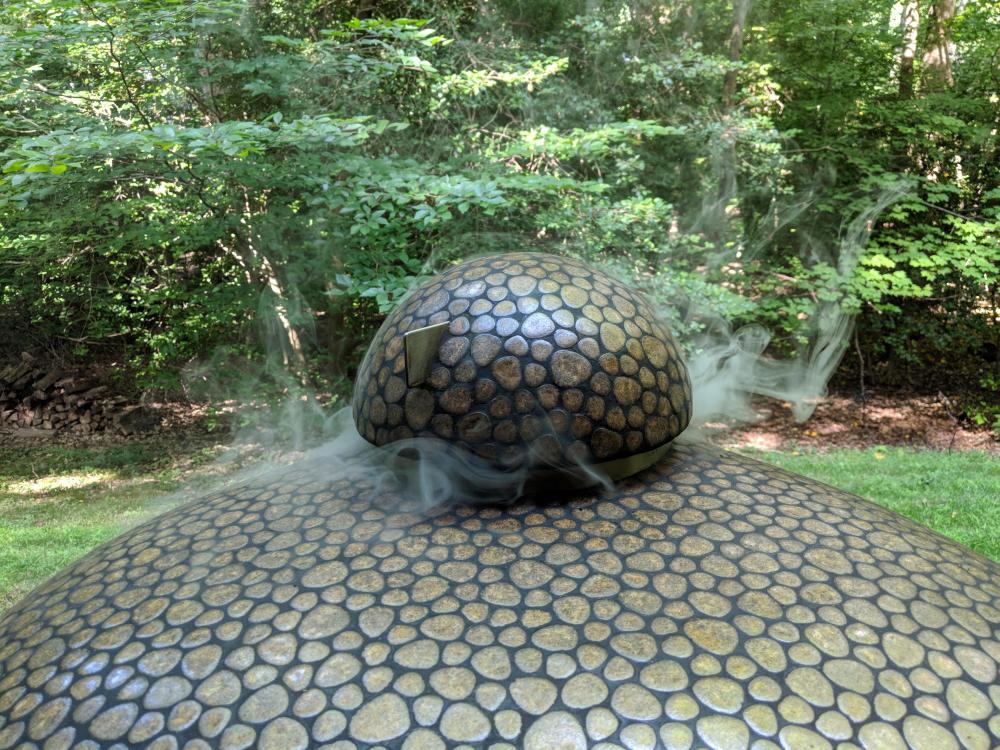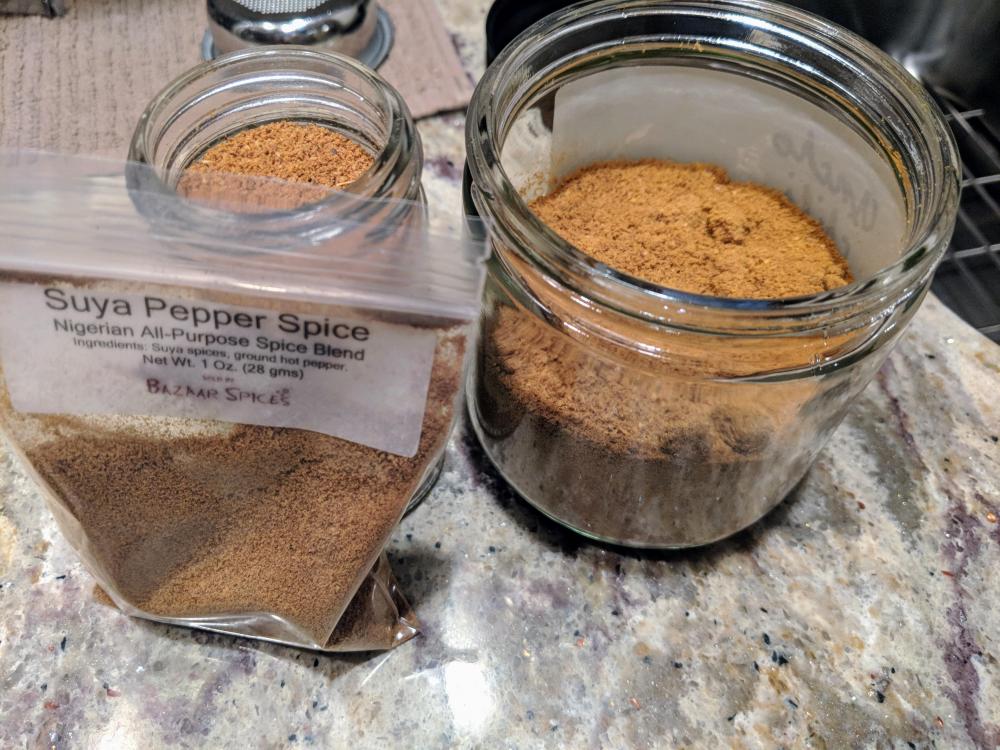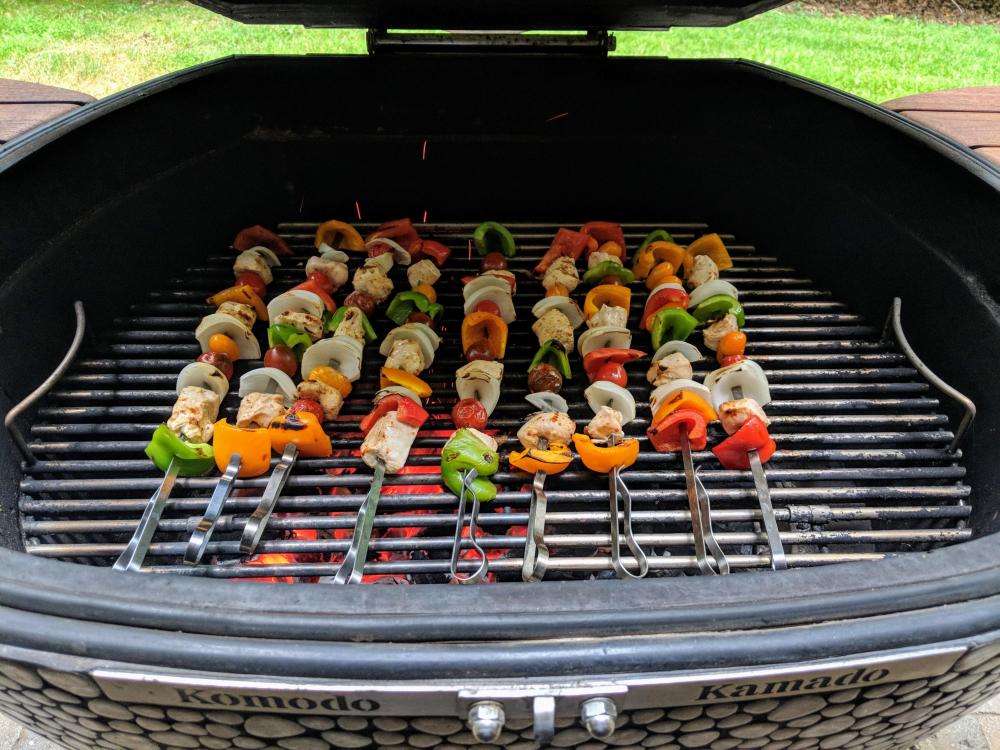-
Posts
2,682 -
Joined
-
Last visited
-
Days Won
98
Content Type
Profiles
Forums
Events
Everything posted by Pequod
-
I would be interested to know which flavour of binchotan all y’all are using. White is prohibitively expensive, but the other types on the Korin site are reasonable and look like they would do the job. I have several more months to noodle the binchotan part of this.
-

Common Mistakes in a True Neopolitan Pizza
Pequod replied to ckreef's topic in Bread, Pizza, Pastries or Desserts
This is why I haven't pulled the trigger yet on a WFO. I can cook everything *I like* the most with my KK, with a preference toward Chicago thin and deep dish styles. A WFO would help me with Neapolitan...but do I *need* to perfect Neapolitan pizza? Jury is still out. Wife would say no... -

Common Mistakes in a True Neopolitan Pizza
Pequod replied to ckreef's topic in Bread, Pizza, Pastries or Desserts
Summarizing: Cooking is all about heat transfer. The temperature of the cooking medium is a rough guide to that, but not the entire story. Heat flux is also proportional to thermal conductivity of the interface between the thing imparting energy and the food absorbing it. For example, a baking steel has much higher conductivity than a baking stone, so at the same temp the steel will transfer more energy to your dough than a stone in the same amount of time, while the top is being cooked at the same rate with both. Place your hand in boiling water and you're immediately burned. Place your hand in a 212F oven and you're fine. Keep your hand in that oven long enough and you'll be burned. When baking pizza on a steel I generally dial the temp down 50-100 degrees from baking on the KK baking stone. Similarly, the "right temp" for your WFO depends on the thermal conductivity of the floor tiles and the type of dough you're baking. -
I got mine from Pennsylvania Macaroni, which is my source for Italian ingredients. I place an order periodically, so added brick cheese to my next when I saw your post.
-
Kai Yang Chicken with Tamarind Dipping Sauce. This is a Milk Street recipe. There’s lemongrass in there, so I know it’s authentic. Making the sauce. Starts with sautéing some lemongrass, a chili, and shallot. Then magic happened! (I.e., I forgot to take any other pics of the sauce making process). The chook brined in a soy sauce, fish sauce, cilantro, lemongrass, etc. mixture for two hours. Then I spun it with a pineapple. The pineapple is sporting Dizzy Pig Pineapple Head, which I’m told is all the rage in Thailand. Ready to serve. Have done this one before. It’s becoming a favorite way to do a chook.
-

Common Mistakes in a True Neopolitan Pizza
Pequod replied to ckreef's topic in Bread, Pizza, Pastries or Desserts
...and to build flavour into your dough. I, for one, appreciate the proper use of “all y’all”. -

Common Mistakes in a True Neopolitan Pizza
Pequod replied to ckreef's topic in Bread, Pizza, Pastries or Desserts
Yup. Agree with everything @Syzygies said. When baking anything in the KK, I’ll light it long before the bake to both fully heat soak and manage the direct heat from below. I also tend to use repurposed Grillgrates as a deflector just in case. The whole thing about browning agents reminds me of something @ckreef preaches often. One of his ten commandments of pizza: the dough recipe is designed to be baked at the temp called for. Taking that one step further - the dough recipe is designed for a particular cooking method too. Hence, when Forkish preaches Neapolitan 00 doughs in a home oven...that works because of the Hydration he employs AND use of a broiler to achieve browning. Browning agents (sugar, oil, DMP) are a way to, in effect, cheat a bit on the cook temp while achieving a similar result. However, sugar and DMP can and do have an impact on the dough itself via the fermentation and proofing processes too. There’s a long thread and much other discussion at pizzamaking.com comparing DMP and non-DMP doughs. There are also a couple of useful tables someone developed that provide guidance on dough fermentation & proofing times as a function of leavening type (sourdough or baker’s yeast) and amount (%) as a function of temperature. The preponderance of empirical evidence is that these tables are pretty accurate. Hence, if you find a dough formula you like, but want to convert it to sourdough or extend the fermentation time for more flavour, these tables provide a nice way to make that conversion. This is the table for sourdough: https://www.pizzamaking.com/forum/index.php?topic=22649.0 This is the table for baker’s yeast: https://www.pizzamaking.com/forum/index.php?topic=26831.0 -

Rockfish with Roasted Poblano Vinaigrette & Yellow Pepper Grits
Pequod replied to Pequod's topic in KK Cooking
There’s heavy cream and cheese in there too, not to mention two puréed yellow peppers. The recipe is online here: https://canadianfamily.ca/recipe/striped-sea-bass-with-roasted-poblano-vinaigrette/ -

Rockfish with Roasted Poblano Vinaigrette & Yellow Pepper Grits
Pequod replied to Pequod's topic in KK Cooking
Don’t see any reason you couldn’t do this with stone ground grits. Bobby’s purpose here is to leave the hominy chunky - only pulse it 5 times in the food processor - so as to achieve that particular texture. But unless you’re a texture Nazi, stone ground grits (my preference as well) would be excellent here. -
That was exactly my thought! If the base is right, and it seems to be, I can dial the heat to my tastes with cayenne mixed into the post cook dusting mixture.
-
Excellent points, @_Ed_. This is why I have hope for the suya pepper from Bazaar Spices. If you look at their African selection, they sell many of the things you list: https://www.bazaarspices.com/african-cuisine. This gave me some hope that they actually used those ingredients in their Suya. Still need to cook with it, but the flavor profile is very similar to the Nigerian original. It just seems to be lacking the heat. I’m hoping this will prove to be my base from which I can dial in.
-
@tony b- did you use dry roasted peanuts again or did you try the peanut butter powder?
-

Rockfish with Roasted Poblano Vinaigrette & Yellow Pepper Grits
Pequod replied to Pequod's topic in KK Cooking
This was from the Mesa Grill book. Interesting thing about the grits is that they were made using canned hominy drained, rinsed, then coarsely chopped in the food processor. They were really fantastic grits. -
Our local farmer’s market features a vendor who brings us the best of the Chesapeake. This week he had enormous Rockfish filets, so we’re making a recipe from Bobby Flay’s Mesa Grill cookbook. Like many Flay recipes, we start by charring and roasting peppers. This time it’s yellow peppers and poblanos, hence the title of this thread. The peppers are being converted into the subject accompaniments. Meanwhile, grilling corn whilst cooking the humongous rockfish filets on the Baking Steel griddle. Just look at these beauties. On the serving platter with the grits and poblano vinaigrette. Like many Flay recipes, big flavors and great use of Southwestern flavors. Home run!
-

Blueberry BBQ Sauce - suitable for canning.
Pequod replied to ckreef's topic in Sauces, Mops, Sops, Bastes, Marinades & Rubs
Wife just returned from her morning activities and gave her a taste. She pronounced it excellent and not too smoky. I think we have a winner. Still going to try replacing sriracha with chipotle powder in the next batch, though. -
You got it. Still have your email, so look for it there.
-

Blueberry BBQ Sauce - suitable for canning.
Pequod replied to ckreef's topic in Sauces, Mops, Sops, Bastes, Marinades & Rubs
Yes, did two full hours with smoke. The first half hour was with high flow on the cold smoker pump, with the rest at the lowest setting. I’d probably try one hour at low flow next time. Will taste it tomorrow after a day in the fridge to see what we have. -

Blueberry BBQ Sauce - suitable for canning.
Pequod replied to ckreef's topic in Sauces, Mops, Sops, Bastes, Marinades & Rubs
Alright, here it is. And the verdict is that this is awesome stuff. First, after two hours the blueberries were very sticky from accumulated smoke. Very shiny in the pan. Made the recipe as written, simmering for twenty minutes. Tasting as I went to see what I might add or change. The smoke flavor was a bit strong, so made two adjustments. First, I thought chipotle chili powder would complement the smoky blueberries, and maybe mellow it a bit. Since I already had Sriracha in there for heat, I only add 1/2 tsp, but I liked the result. Next time I'd probably omit the Sriracha and start with 1/2 tbsp chipotle adding more if needed. Second addition was 2 tbsp of this: I think this is a keeper. Final result: Great stuff. Will experiment more next time, but can't wait for a cook with this. -

Blueberry BBQ Sauce - suitable for canning.
Pequod replied to ckreef's topic in Sauces, Mops, Sops, Bastes, Marinades & Rubs
-

Blueberry BBQ Sauce - suitable for canning.
Pequod replied to ckreef's topic in Sauces, Mops, Sops, Bastes, Marinades & Rubs
And here we go. Going for a two hour cold smoke first. Nothing like the way cold smoke rolls out of the top on a beautiful Saturday July morning. -
Not spicy at all. Just great flavor from the Aleppo Pepper. If you like, I’ll send you the recipe.
-
Picked up the Suya pepper from Bazaar Spices in downtown DC today. That’s the Bazaar Spices version on the left and Nigerian version by way of the UK on the right. First thing you notice is the color is very similar. A side-by-side taste test proved them to be similar in flavor profile as well, although the Nigerian version has more heat. Neither has an overt peanut flavor like the Milk Street recipe does. These are much more similar to each other than the Milk Street version is to either (I smell Americanization!). Looking forward to a near future cook with these two and the Milk Street recipe side by side for a taste test.
-
Shish Tawuq using a simple Aleppo Pepper marinade from the book, “Aromas of Aleppo”. Very tasty indeed.
-

Common Mistakes in a True Neopolitan Pizza
Pequod replied to ckreef's topic in Bread, Pizza, Pastries or Desserts
Ah, I see. You did the Neapolitan dough from pizza Bible. I'd assumed you'd done the Master dough, which is NY style. A bit of dmp will definitely help the Neapolitan too, as it's essentially unmalted. I stand by my recommendation of the pizza Bible NY style dough. It's very good and works well on a KK. -

Common Mistakes in a True Neopolitan Pizza
Pequod replied to ckreef's topic in Bread, Pizza, Pastries or Desserts
The jury rules not guilty by reason of insanity! Just some tips based on my experience with the Forkish and Pizza Bible books, plus loads of lurking at pizzamaking.com. I don't know about flours in the UK, but most flours in the US contain malt, which is a browning agent. In spite of this, some recipes add diastatic malt powder (DMP). From the glossary at pizzamaking.com: Many of the better NY Style doughs posted at pizzamaking.com add a small amount of DMP in spite of the fact that they also use high gluten flours that already contain some malt. NY pizzas cook at mid-range temps, meaning from around 500-700F because they contain malt or other browning agents, and would turn to carbon if baked at a higher temp. 00 flour, on the other hand, is processed to such a degree that it contains no malt. Hence, pizzas made with 00 flour need either very high temps, high heat transfer mechanisms (e.g., the broiler method in Forkish and Pizza Bible), or added browning agents. Neapolitan pizzas use 00 flour and bake at very high temps. The difference between Forkish and Pizza Bible: Forkish is focused on Neapolitan style doughs using 00 flour, but then baking at low, home oven temps using the broiler method for browning. If you don't have a broiler you won't get browning. Even if you do, you don't really get Neapolitan pizza, even though it sort of looks like it. The basic Pizza Bible dough is a NY style dough that calls for high gluten, malted flours -- bread flour. The particular flours that are recommended really do make a difference. These flours already contain malt, and most at pizzamaking.com feel that the added DMP in the Pizza Bible recipe is excessive. My recommendation: try making the Pizza Bible recipe with bread flour. Added DMP is optional. I suspect you’ll like that pizza best of all.




